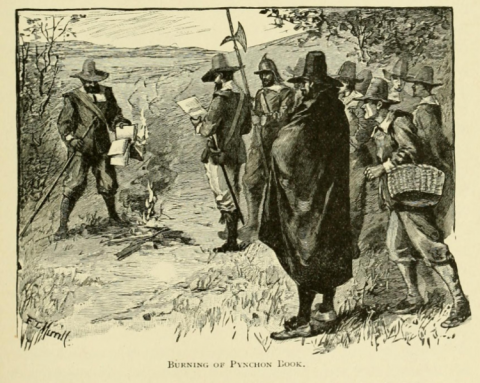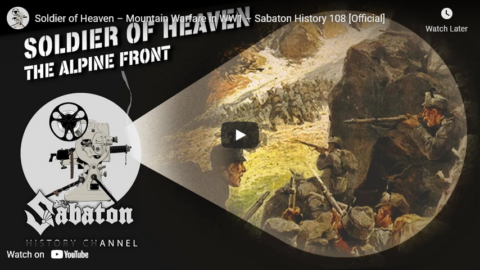World War Two
Published 25 Jan 2022With high losses of German soldiers and low birth rates, the Nazis worry about who will inherit the Nazi paradise they are fighting to build. One of their ideas to breed a new Aryan generation is the Lebensborn association.
(more…)
January 26, 2022
Nazi Breeding Farms – Lebensborn – On the Homefront 014
“Last year, we’re told, was the ‘deadliest’ year for transgender people since records began”
Tish Still, parent of a child who identifies as transgender, was worried about the “epidemic” of trans murder victims:
Facts always matter — but they take on a particular importance when they’re being used to claim that your child could be murdered. So I decided to delve into the research used to inform these claims. For me, it was personal.
The Government doesn’t publish data on the number of transgender people in the UK, though in 2018 it “tentatively” estimated that the figure stood between “approximately 200,000-500,000”. What proportion of that number must have been killed to warrant today’s warnings of trans murder epidemic? 10? 100? 1,000?
To find out, I analysed data collected by the trans-led organisation Transgender Europe, which has received more than a million dollars from the Arcus Foundation, who are based in the US and take a keen interest in transgender issues. As well as donating almost $150,000 to Stonewall, in 2015 the Arcus Foundation handed $312,000 to Transgender Europe specifically to supply reliable global data on transgender murders. The website it created provides an interactive map and links to documents naming the transgender victims.
Looking at Transgender Europe’s list of cases, it became clear — to my relief — that the total murders reported for the United Kingdom since 2008 amounted to 11. This translates as a murder rate of around 0.165%.
Now, that is still significantly higher than the murder rate for the UK as a whole: the ONS reports that the homicide rate in the UK for the year ending March 2020 was 11.7 per million people, rising to 17 per million among men. But look a bit closer at the list of trans murder victims, and that figure of 11 becomes increasingly suspect.
For instance, two of the listed victims, Vikki Thompson and Jacqueline Cowdry, appear to have been erroneously included. Thompson died by suicide while incarcerated in HMP Leeds, while Cowdry’s death was ultimately ruled as non-suspicious. This reduces the total to nine unlawful deaths, all of whom were born male. (By contrast, the number of homicides committed by transgender people between 2008 and 2017 was 12.) For context, the number of women killed by men during the same period was 1800. So much for our alleged “cis-privilege”.
Searching for more information led me to the work of Karen Ingala-Smith, who founded the Counting Dead Women project in 2012 after she realised that there was no central record of the extent of femicide here in the UK; thanks to her, a list of murdered women is read out in the House of Commons each year to imprint the rate of femicide on the minds our political class. Ingala-Smith’s tireless work focusses on female victims of, predominantly, male violence, though she made an exception to highlight the discrepancy between the mass hysteria about transgender victims of homicide compared to the treatment of woman-killing as mere background noise. (There is still no equivalent to the Trans Day of Remembrance for the much greater number of women killed by male violence.)
Crucially, her research sheds a vital spotlight on the nine remaining victims identified by the Trans Murder Monitoring report. Reading it, two things become clear. The first is that it is not entirely certain that all the victims themselves identified with the label “transgender”. The second is that the motives behind these crimes are more complex than straightforward “transphobia”.
“Soldier of Heaven” – Mountain Warfare in WW1 – Sabaton History 108 [Official]
Sabaton History
Published 25 Jan 2022The war in the Alps between the Italians and the Austro-Hungarians added new dimensions to the fighting in the Great War since mountain warfare has its own unique set of challenges and dangers. What sort of men were doing the fighting here? And how did they cope with it? How did the survivors survive? Let’s take a look.
Support Sabaton History on Patreon: https://www.patreon.com/sabatonhistory
Listen to “Soldier of Heaven”: https://music.sabaton.net/SoldierOfHe…
Watch the Official Music Video of “Soldier of Heaven” here: https://www.youtube.com/watch?v=LYI3e…
Listen to Sabaton on Spotify: http://smarturl.it/SabatonSpotify
Official Sabaton Merchandise Shop: http://bit.ly/SabatonOfficialShopHosted by: Indy Neidell
Written by: Markus Linke and Indy Neidell
Directed by: Astrid Deinhard and Wieke Kapteijns
Produced by: Pär Sundström, Astrid Deinhard and Spartacus Olsson
Creative Producer: Maria Kyhle
Executive Producers: Pär Sundström, Joakim Brodén, Tomas Sunmo, Indy Neidell, Astrid Deinhard, and Spartacus Olsson
Post-Production Director: Wieke Kapteijns
Editor: Iryna Dulka
Sound Editor: Marek Kaminski
Archive: Reuters/Screenocean – https://www.screenocean.com
Sources:
– IWM Q 65115, IWM Q 65299, IWM Q 65062, IWM Q 65324, IWM Q 65102, IWM 1034-4, IWM 1062-14, IWM 459, IWM Q 114805б IWM Q 65104, IWM Q 65053, IWM Q 54778, IWM Q 65114, IWM Q 65130, IWM Q 65158
– esercito.difesa.it
– Médiathèque de l’architecture et du patrimoineS
– Business vector created by macrovector, Background vector created by freepik – www.freepik.com
All music by: SabatonAn OnLion Entertainment GmbH and Raging Beaver Publishing AB co-Production.
© Raging Beaver Publishing AB, 2019 – all rights reserved.
Three generations of the OG Puritans
At Founding Questions, Severian considers the New England Puritans and the world they inhabited:

Portrayal of the burning of copies of William Pynchon’s book The Meritous Price of Our Redemption by early colonists of the Massachusetts Bay Colony, who saw his book as heresy; it was the first-ever banned book in the New World and only 4 original copies are known to survive today.
Engraving by F.T. Merrill in The History of Springfield for the Young by Charles Barrows, 1921.
Total cultural and intellectual uniformity, constantly reinforced. If those Puritans were going to go crazy, in other words, they’d do it within very carefully circumscribed boundaries. The only thing close to that level of mental control is Twitter … and I suppose I must put the disclaimer out front, so that you can factor it in if you disagree with me: I hate the Puritans. They’re just SJWs with balls and a slightly less tedious prose style. When they’re not obsessing over the tiniest motions of their pwecious widdle selves, they’re screwing you over for the hellbound heathen you are.
Credit where it’s due, though: If you need to go sodbusting in an unexplored continent, the Puritans are your guys. The original Plymouth Bay colony was thoroughly militarized, and they didn’t fuck around — when the local Indian tribes were beginning to wonder if they shouldn’t do something about these White devils they’d let loose, the Puritans attacked the fiercest tribe and wiped them out, as a show of force. Life was hard in the OG Plymouth Colony, but it was about as good as you were going to get in that era.
But the typical inheritance pattern soon took over. “Regression to the mean” is a behavioral phenomenon, too, not just an IQ one. Puritanism is an obsessive, paranoid creed; it can only flourish in times of high stress and dire insecurity. But by the 1690s, Plymouth Colony was arguably the healthiest, wealthiest, safest place per capita in Christendom (not a high bar, obviously, but still). The OG settlers were all gone by that time, of course — the original settlement, you’ll recall, was 1620 — and so were most of their almost as hardcore kids. The third generation was coming up fast …
… but finding their way blocked by the old men of the previous generation, who were as tediously, dogmatically Puritan as the OGs, but without the stones. This made them — the 2nd generation — enormous hypocrites, but even without the hypocrisy, imagine living in a world where the ultra-wealthy who control everything in society tell you that they deserve it all, because they’re God’s Elect, while you, sinner, deserve to live in a rented box and eat bugs and own nothing, because God hates you.
History’s full of weird stuff like that, and that was the situation circa 1690. One example will have to do: Since we probably all got to experience Nathaniel Hawthorne’s existential angst back in high school, consider that the ancestor who caused him so much grief, Judge John Hathorne, was born in 1641. He would’ve been 51, then, during his trial service – a ripe old age by 17th century standards.
Not only that, but the 2nd generation — the one that stubbornly refused to move on and let the kids take their place in the sun — had spent the previous twenty years grievously fucking things up. King Philip’s War nearly ruined the colony, there’d been widespread plague, and oh yeah, that whole Restoration thing back in England — the hardest of hardcore Puritan thinkers in the run-up to the Civil War had been colonials; guys like Col. Rainsborough were closely associated with Massachusetts, etc. Lots of bad blood on the other side of the water, and while the third generation was willing to let bygones by bygones, the 2nd generation wasn’t.
So: Hypocritical old throwbacks and cavemen, with a decades-long track record of dumbfuckery, who just wouldn’t get out of the way. As they got older, they got more insular and inward-looking, as old people tend to do … and “more inward looking” for a Puritan is a near-BCG level of narcissism. Meanwhile, the new generation is eager to take their place in the burgeoning Atlantic world, especially after the Glorious Revolution (1688) … but can’t.
Reliant Robin Three Wheeler | British Cars | Drive in (1973)
ThamesTv
Published 21 Jul 2019Tony Bastable takes the iconic Reliant Robin for a spin to see what this new British car has to offer.
First shown: 29/10/1973
If you would like to license a clip from this video please e mail:
archive@fremantle.com
Quote: VT8219
From the comments:
Tortinwall
2 years ago
I love the idea that you buy a Reliant Robin and then keep “valuable objects” in the boot.
QotD: “Waltzing Matilda”
The poet Banjo Paterson is traditionally credited with the song in the version generally performed, though some scholars continue to question this. Still, the song we know today began life in January 1895, when Paterson was visiting the Macpherson property at Dagworth Station in Queensland, north-west of Winton. Also visiting, from Victoria, was Christina Macpherson, who’d come home to spend Christmas with her father and brothers after the death of their mother. One day Christina played Paterson a tune she’d heard at the races in western Victoria, and the poet said he thought he could put words to it. The tune is said to have been “Thou Bonnie Wood of Craigielea”, but there was also an 18th century English marching song called “The Bold Fusilier”. Paterson claimed never to have heard the earlier lyric but its pattern is so similar it’s impossible to believe that “Matilda” wasn’t laid out to the scheme of the earlier number:
A gay Fusilier was marching down through Rochester
Bound for the war in the Low Country
And he cried as he tramped through the dear streets of Rochester
Who’ll be a sojer for Marlb’ro with me?
Who’ll be a sojer? Who’ll be a sojer?Who’ll be a sojer for Marlb’ro with me?
Marlborough being the Duke thereof: Winston Churchill’s forebear. “Cried as he tramped”? “Sang as he watched”? Don’t tell me that’s not a conscious evocation. Nonetheless, “Waltzing Matilda” is a splendid improvement on the original. If you’re a non-Australian who learned the song as a child, chances are you loved singing it long before you had a clue what the hell was going on. What’s a swagman? What’s a billabong? Why’s it under a coolibah tree? Who cares? It’s one of the most euphonious songs ever written, and the fact that the euphonies are all explicitly Australian and the words recur in no other well known song is all the more reason why “Matilda” should have been upgraded to official anthem status.
And yes, a “swagman” is a hobo, and this one steals a “jumbuck” (sheep), but he ends up drowning, which gives the song a surer moral resolution than most similar material. Yet in a sense that’s over-thinking it. It’s not about the literal meaning of the words, but rather the bigger picture that opens up when they’re set to the notes of that great rollicking melody: the big sky and empty horizon and blessed climate, all the possibilities of an island continent, a literally boundless liberation from the Victorian tenements and laborers’ cottages of cramped little England. Few of us would wish to be an actual swagman with a tucker bag, but the song is itself a kind of musical swagman with a psychological tucker bag, a rowdy vignette that captures the size of the land. One early version of it went “Rovin’ Australia, rovin’ Australia, who’ll come a-rovin’ Australia with me” – which is a lousy lyric, but accurately describes what the song does.
One sign of the song’s muscular quality is the number of variations. Of the rock’n’roll crowd’s monkeying around with it, I think I’ll stick with Bill Haley and the Comets’ goofy “Rockin’ Matilda”. The Pogues-Tom Waits approach – “And The Band Played Waltzing Matilda”, “Tom Traubert’s Blues” – seems to me to glum up the works unnecessarily. To use it for the story of a soldier who loses his legs at Gallipoli is unduly reductive: It’s too good a real marching song to be recast as an ironic marching song. I don’t know whether today’s diggers marched to “Matilda” in Afghanistan and Iraq and East Timor and wherever’s next but it’s one of the greatest marching songs ever, and today as a century ago it remains the great Australian contribution to the global songbook:
Waltzing Matilda
Waltzing Matilda
You’ll come a-waltzing Matilda with me
And his ghost may be heard as you pass by that billabongYou’ll come a-waltzing Matilda with me
Mark Steyn, adapted from A Song for the Season, 2008.






